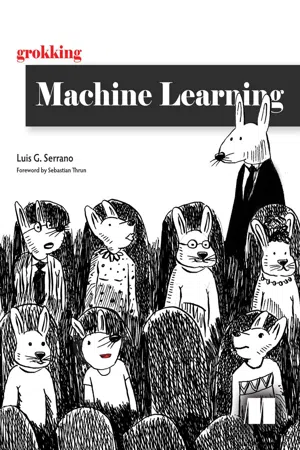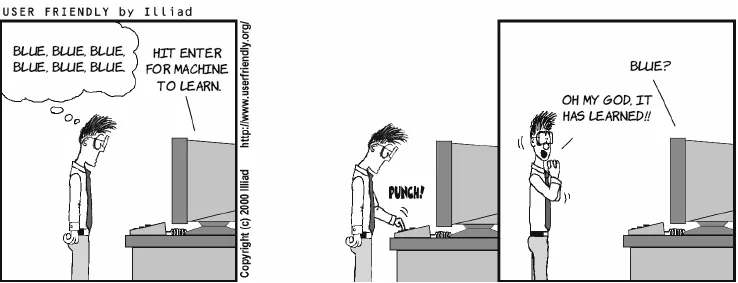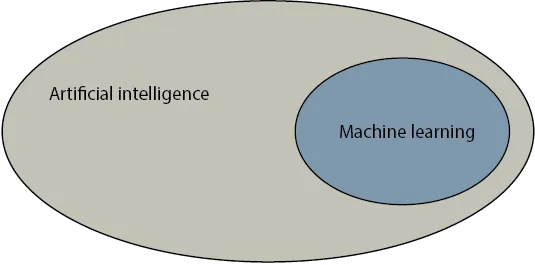
- 512 pages
- English
- ePUB (mobile friendly)
- Available on iOS & Android
Grokking Machine Learning
About this book
Discover valuable machine learning techniques you can understand and apply using just high-school math. In Grokking Machine Learning you will learn: Supervised algorithms for classifying and splitting data
Methods for cleaning and simplifying data
Machine learning packages and tools
Neural networks and ensemble methods for complex datasets Grokking Machine Learning teaches you how to apply ML to your projects using only standard Python code and high school-level math. No specialist knowledge is required to tackle the hands-on exercises using Python and readily available machine learning tools. Packed with easy-to-follow Python-based exercises and mini-projects, this book sets you on the path to becoming a machine learning expert. Purchase of the print book includes a free eBook in PDF, Kindle, and ePub formats from Manning Publications. About the technology
Discover powerful machine learning techniques you can understand and apply using only high school math! Put simply, machine learning is a set of techniques for data analysis based on algorithms that deliver better results as you give them more data. ML powers many cutting-edge technologies, such as recommendation systems, facial recognition software, smart speakers, and even self-driving cars. This unique book introduces the core concepts of machine learning, using relatable examples, engaging exercises, and crisp illustrations. About the book
Grokking Machine Learning presents machine learning algorithms and techniques in a way that anyone can understand. This book skips the confused academic jargon and offers clear explanations that require only basic algebra. As you go, you'll build interesting projects with Python, including models for spam detection and image recognition. You'll also pick up practical skills for cleaning and preparing data. What's inside Supervised algorithms for classifying and splitting data
Methods for cleaning and simplifying data
Machine learning packages and tools
Neural networks and ensemble methods for complex datasetsAbout the reader
For readers who know basic Python. No machine learning knowledge necessary. About the author
Luis G. Serrano is a research scientist in quantum artificial intelligence. Previously, he was a Machine Learning Engineer at Google and Lead Artificial Intelligence Educator at Apple.Table of Contents
1 What is machine learning? It is common sense, except done by a computer
2 Types of machine learning
3 Drawing a line close to our points: Linear regression
4 Optimizing the training process: Underfitting, overfitting, testing, and regularization
5 Using lines to split our points: The perceptron algorithm
6 A continuous approach to splitting points: Logistic classifiers
7 How do you measure classification models? Accuracy and its friends
8 Using probability to its maximum: The naive Bayes model
9 Splitting data by asking questions: Decision trees
10 Combining building blocks to gain more power: Neural networks
11 Finding boundaries with style: Support vector machines and the kernel method
12 Combining models to maximize results: Ensemble learning
13 Putting it all in practice: A real-life example of data engineering and machine learning
Frequently asked questions
- Essential is ideal for learners and professionals who enjoy exploring a wide range of subjects. Access the Essential Library with 800,000+ trusted titles and best-sellers across business, personal growth, and the humanities. Includes unlimited reading time and Standard Read Aloud voice.
- Complete: Perfect for advanced learners and researchers needing full, unrestricted access. Unlock 1.4M+ books across hundreds of subjects, including academic and specialized titles. The Complete Plan also includes advanced features like Premium Read Aloud and Research Assistant.
Please note we cannot support devices running on iOS 13 and Android 7 or earlier. Learn more about using the app.
Information
1 What is machine learning? It is common sense, except done by a computer
- what is machine learning
- is machine learning hard (spoiler: no)
- what do we learn in this book
- what is artificial intelligence, and how does it differ from machine learning
- how do humans think, and how can we inject those ideas into a machine
- some basic machine learning examples in real life

Do I need a heavy math and coding background to understand machine learning?
OK, so what exactly is machine learning?

- By using logic and reasoning
- By using our experience
Table of contents
- Grokking Machine Learning
- inside front cover
- Copyright
- contents
- front matter
- 1 What is machine learning? It is common sense, except done by a computer
- 2 Types of machine learning
- 3 Drawing a line close to our points: Linear regression
- 4 Optimizing the training process: Underfitting, overfitting, testing, and regularization
- 5 Using lines to split our points: The perceptron algorithm
- 6 A continuous approach to splitting points: Logistic classifiers
- 7 How do you measure classification models? Accuracy and its friends
- 8 Using probability to its maximum: The naive Bayes model
- 9 Splitting data by asking questions: Decision trees
- 10 Combining building blocks to gain more power: Neural networks
- 11 Finding boundaries with style: Support vector machines and the kernel method
- 12 Combining models to maximize results: Ensemble learning
- 13 Putting it all in practice: A real-life example of data engineering and machine learning
- Appendix A. Solutions to the exercises
- Appendix B. The math behind gradient descent: Coming down a mountain using derivatives and slopes
- Appendix C. References
- index